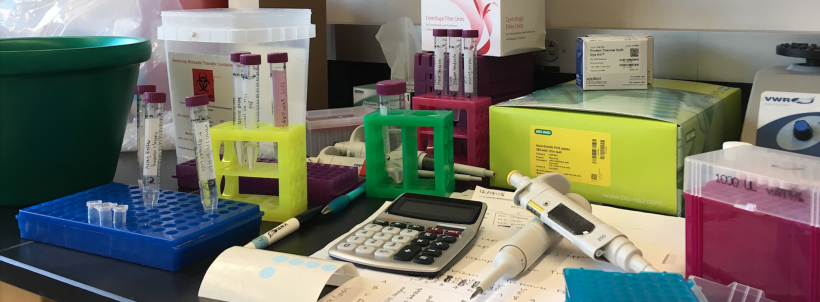Difference between revisions of "Using CRISPRi to increase ethanol yield in E. coli MG1655"
From Course Wiki
Noreen Lyell (Talk | contribs) (→Laboratory exercises) |
Noreen Lyell (Talk | contribs) (→Related modules) |
||
| Line 17: | Line 17: | ||
[[ |In silico cloning of pdCas9 construct]] | [[ |In silico cloning of pdCas9 construct]] | ||
| + | *Students perform steps used in classic cloning using free, online DNA manipulation interface using protocols that can be completed in remote teaching format | ||
| + | *Useful when timing doesn't allow for at-the-bench cloning laboratory exercise | ||
| + | *Provides background details on methods used for plasmid construction that are important in laboratory exercises focused on the steps after cloning | ||
| + | *Steps for optional at-the-bench confirmation digest laboratory exercise included | ||
| − | + | Optimizing sgRNA design to further increase ethanol yield (coming soon!) | |
| + | *Students analyze datasets collected in previous semesters to design an optimized sgRNA sequence using protocols that can be completed in remote teaching format | ||
Revision as of 14:27, 2 August 2020
Overview
Laboratory exercises
Day 1:
Day 2:
Day 3:
Day 4:
Day 5:
Related modules
[[ |In silico cloning of pdCas9 construct]]
- Students perform steps used in classic cloning using free, online DNA manipulation interface using protocols that can be completed in remote teaching format
- Useful when timing doesn't allow for at-the-bench cloning laboratory exercise
- Provides background details on methods used for plasmid construction that are important in laboratory exercises focused on the steps after cloning
- Steps for optional at-the-bench confirmation digest laboratory exercise included
Optimizing sgRNA design to further increase ethanol yield (coming soon!)
- Students analyze datasets collected in previous semesters to design an optimized sgRNA sequence using protocols that can be completed in remote teaching format
